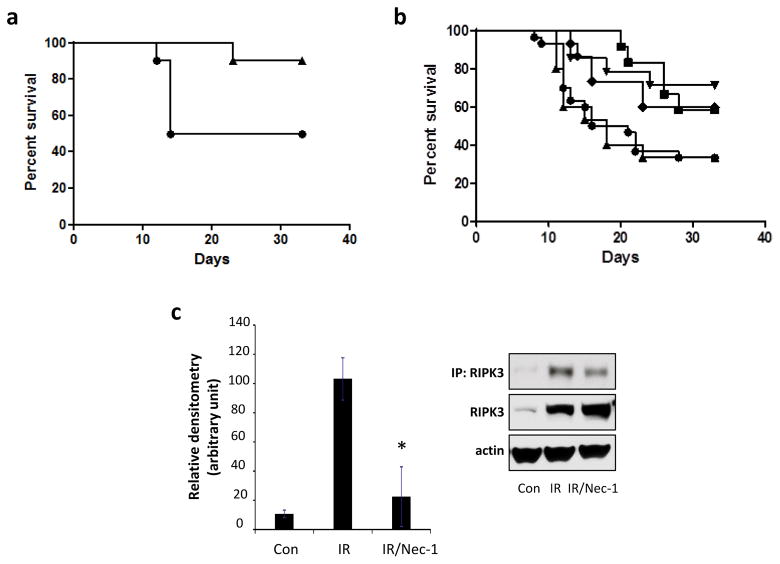Figure 2.
Radiation mitigation by necrostatin-1 (Nec-1). (a) C57BL/6 mice injected with 1.65 mg/kg Nec-1 i.v. at 48 h after 9.5 Gy (triangles) had increased survival vs. vehicle (circles) (p = 0. 04 n = 15/group). (b) Nec-1 (1.65 mg/kg) given i.v. 1h before (triangles) 9.25 Gy irradiation did not improve survival vs. vehicle (closed circles). Whereas mice that received Nec-1 (1.65 mg/kg) i.v. at 24h (inverted triangles), at 48h (diamonds) or at 72h (open circles) after irradiation had increased survival vs. vehicle (closed circles) (p = 0.02 for 24h; p = 0. 04 for 48h; p = 0.02 for 72h, n = 15 mice/group). (c) Effect of Nec-1 on RIPK3 phosphorylation induced by irradiation in mouse intestine. Nec-1 attenuated irradiation-induced phosphorylation of RIPK3. Inset: Proteins immunoprecipited with anti-phosphoserine (p-Ser) antibody were probed with RIPK3 antibody. Mean ± SD, *p < 0.01 vs. irradiation (IR).

